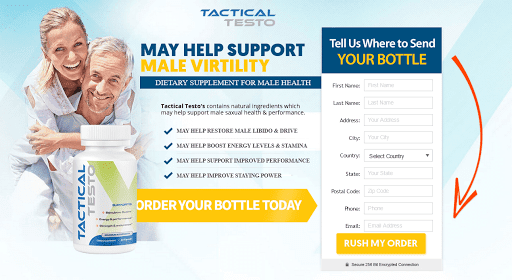Originally Published on: QuantzigCreating and Implementing a Clinical Data Pipeline Strategy
In the ever-evolving landscape of Industry 4.0, continuous technological advancements reshape manufacturing industries and our daily lives. Staying ahead of these trends not only provides a competitive edge but also improves traceability and minimizes risks. The healthcare sector, driven by the recent COVID-19 pandemic, has undergone rapid changes, leading to increased demand for remote patient support and a surge in work-from-home scenarios. The integration of AI, machine learning, and predictive analytics has opened up new possibilities for the management and analysis of clinical data.
##Crafting a Robust Clinical Data Pipeline Strategy:
The foundation of efficient healthcare data management lies in a well-structured clinical data pipeline strategy. This standardized approach encompasses the systematic collection, storage, and analysis of healthcare data, aiming to enhance patient care, support research initiatives, and facilitate informed decision-making. A meticulously designed clinical data strategy ensures data integrity, privacy, and security in compliance with regulatory mandates. By incorporating electronic health record systems and leveraging data analytics technologies, organizations can streamline data management, leading to tangible benefits.
###Key Components of an Advanced Healthcare Analytics Strategy:
This article explores crucial components of a healthcare analytics strategy, addressing aspects such as data source integration, quality assurance, security, and interoperability. It delves into the pivotal role of data management in diverse healthcare domains, including clinical research, life sciences, and precision medicine. Real-world case studies shed light on successful implementations and lessons learned, emphasizing alignment with organizational objectives, industry standards, and compliance requirements.
##Advantages of Implementing a Clinical Data Pipeline Strategy:
The implementation of a clinical data pipeline strategy offers several advantages for healthcare organizations:
###1. Enable Real-World Evidence-Based Line of Therapy Management:
- Harness real-world evidence for improved line of therapy management.
- Collect, integrate, and process data from diverse sources for accurate insights.
- Facilitate informed decisions, tailored therapies, and interventions based on robust evidence.
###2. Improvement in Drug Efficacy:
- Facilitate enhanced drug efficacy through seamless collation and analysis of patient data.
- Identify treatment responses, adverse reactions, and patient characteristics in real time.
- Accelerate the development of more effective medications, leading to improved outcomes.
###3. Enhanced Drug Marketing Effectiveness:
- Amplify drug marketing effectiveness by orchestrating a seamless flow of patient insights.
- Transform raw clinical data into actionable intelligence for precise marketing endeavors.
- Bolster credibility and trust through data-driven, evidence-based marketing claims.
##Key Benefits of an Advanced Clinical Data Pipeline Strategy:
###1. Reduced Patient Dropout Rate:
- Proactively engage patients through personalized interventions.
- Gain real-time insights into patient progress, enabling timely adjustments.
- Facilitate targeted communication to address concerns and provide support promptly.
###2. Cost-Effective Therapy:
- Optimize therapy costs through data-driven optimization.
- Identify cost-effective interventions and tailor therapies to individual patient profiles.
- Enable early detection of treatment inefficiencies, preventing costly complications.
###3. Improved Patient Mapping Across Data Sources:
- Enhance patient journey mapping rates across disparate data sources.
- Unify data from electronic health records, claims, wearable devices, and more.
- Ensure accurate patient records through robust data cleansing and integration processes.
##Utilizing Clinical Data Pipeline Strategy in Real-World Scenarios:
In the dynamic landscape of healthcare, a robust clinical data pipeline strategy is crucial for revolutionizing patient outcomes, driving innovation, and optimizing treatments. Technology integration serves as the linchpin, weaving together digital infrastructure, analytics tools, and information systems. The strategy fosters collaboration, aligns with regulatory compliance, and enables evidence-based decision-making, ultimately leading to transformative outcomes.
##Success Story: Transforming Healthcare Insights Quantzig's Innovative Approach to Clinical Data Pipeline Strategy Implementation
###Client Challenges:
- Low patient and physician map rate across data sources.
- Siloed planning of drug development based on uni-dimensional patient data.
- Low initial adoption due to poor marketing effectiveness.
###Solutions:
- Unified patient registry database for comprehensive patient profiles.
- Implementation of the OMOP schema for standardized data reporting.
- Patient journey database infrastructure for holistic insights into patient pathways.
###Impact Delivered:
- 50% improvement in patient and physician map rate.
- 3x faster drug adoption during the launch phase.
- 40% reduction in the cost of therapy.
##Empowering Healthcare Through Data-Driven Innovation:
In the dynamic healthcare industry, a well-executed clinical data pipeline strategy is indispensable for unlocking the full potential of data-driven innovation. By orchestrating seamless data acquisition, validation, integration, and analysis, this strategy empowers healthcare institutions to make informed decisions, drive evidence-based practices, and advance patient care. As healthcare evolves, a cohesive data strategy serves as a catalyst for transformative outcomes, optimizing patient care, streamlining operations, and driving evidence-based healthcare improvements.
###Ready to Transform Your Data Strategy? Subscribe to Quantzig today to discover how our expertise can help your organization unlock the true potential of your data, drive innovation, and gain a competitive edge.




